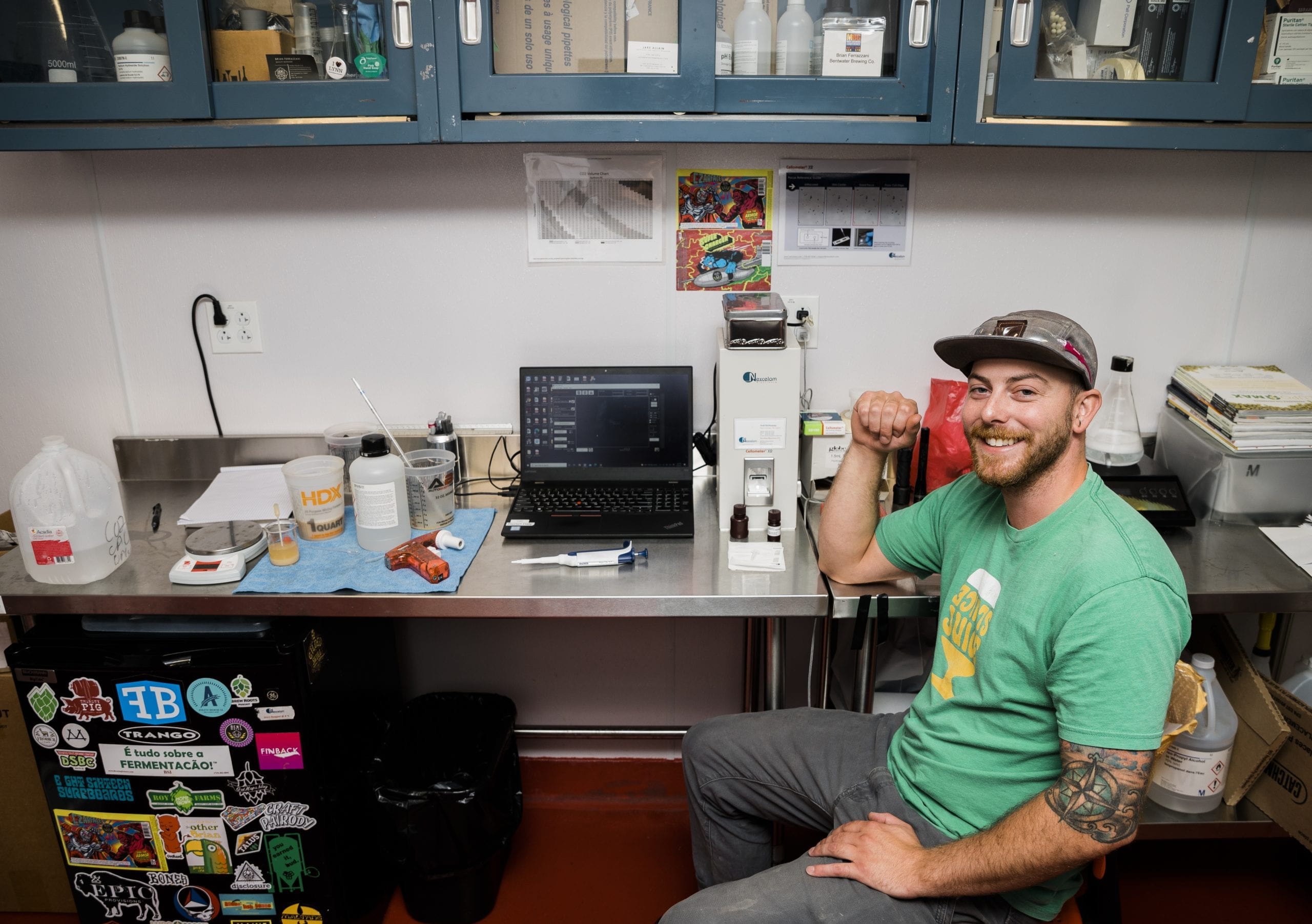LYNN — As Bent Water Brewery expands its products to other states, the company continues to emphasize the importance of the quality of its beer.
Equipped with an onsite quality control manager, Bent Water has its own lab that tests the yeast, bacteria, oxygen and alcohol content of all of its products before shipping them out.
The brewery’s Quality Control Manager Brian Ferrazzani got his degree in biotechnology and spent eight years working in the field.
Ferrazzani said that one day he was at Bent Water’s tap room to watch his friend’s band play, and wound up meeting one of the owners and telling him about his work in biotechnology. A couple of weeks later, Ferrazzani found himself working part time in the company’s lab, upon the owner’s request. He spent a couple of weeks working with an intern from Germany in the lab, but soon took it over on his own.
Ferrazzani said a lot of the work in biotechnology from his prior job transferred to his work at Bent Water.
“I like to say that brewing may have been the earliest form of biotechnology, even though we didn’t know that we were using living organisms at first,” he said.
The largest part of Ferrazzani’s job in the lab at Bent Water is yeast management. He said they use yeast during fermentation, buying small amounts from vendors to then pitch into the beer.
When a batch is done fermenting, Ferrazzani lowers the temperature to drop the yeast out of suspension, which ultimately allows for a cleaner-looking — and better-tasting — beer.
That yeast is then harvested and the cells are counted using a machine to make sure it is healthy before putting it into the next batch.
Ferrazzani uses a machine which counts the yeast with a microscope identifying how many dead and live cells there are by differentiating the live cells with a green colorant and dead cells with red.
“We do this because we want really consistent fermentation,” Ferrazzani said.
If too much yeast is added, Ferrazzani said they may contaminate the batch with “off” flavors, but if not enough is added, then the beer may not hit a desirable alcohol content.
Another large part of his job is microbiology, wherein Ferrazzani makes sure there is no unwanted bacteria in the beer.
He also checks the alcohol content, monitors the fermentation process and does sensory testing on older beers to see how long they can stay on the shelf.
With sensory testing, Ferrazzani said he has discovered that their India pale ales (IPAs) shouldn’t stay on the shelves for longer than three months, while lagers can last up to six months to ensure the best taste and quality.
Ferrazzani also tests the beer during fermentation — while it is in the fermentation tanks — and during packaging. When the beer is being packaged, he will test a can at the start of packaging, then again at about 150 cases in, and then at 250 cases.
In this process, if a beer from the 200th case doesn’t match the brewery’s standards but the beer from the 150th case does, then they only have to discard the cases from 151 to 200.
Ferrazzani uses a handful of equipment — some costing as much as $30,000 — to test the beer at different phases. For instance, the machine that assists with testing during packaging cuts the can and measures the alcohol and oxygen content.
After four years on the job, Ferrazzani said he is still surprised how much work and science goes into making beer.
“It’s been awesome to see the company grow and how we’ve expanded on the quality side,” Ferrazzani said. “It just led to a better product.”
Ferrazzani credited his team, saying that even though he does the quality work in the lab, “the guys in the brewhouse are doing quality work too, so it’s really a team effort and a team mentality.”
Ferrazzani said it has taken some time to implement all the different testing checkpoints throughout the brewing process, but it has “only improved the quality of our beer.”

